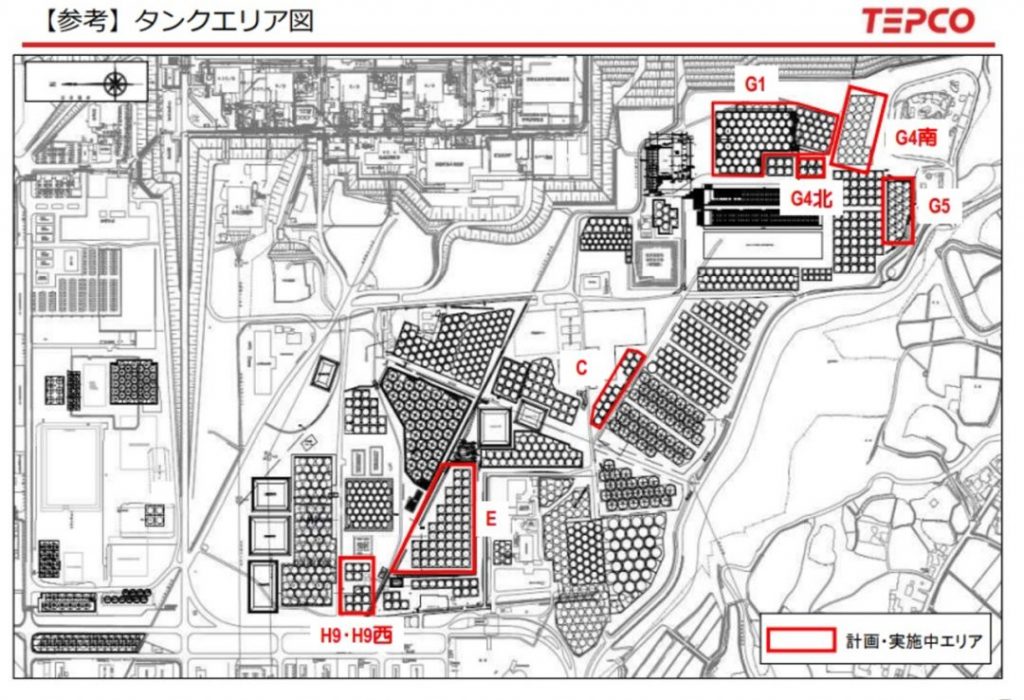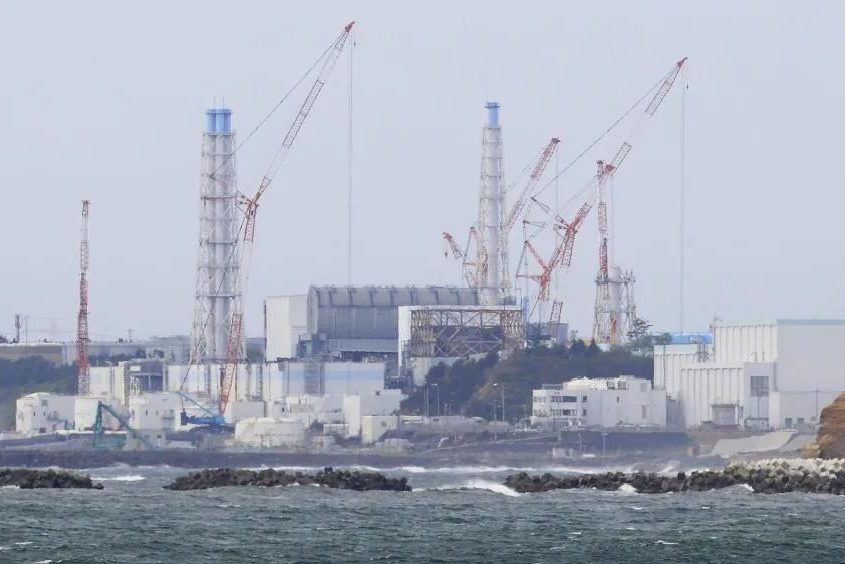April 13, 2021, the Japanese government decided at a cabinet meeting that the treated water from Tokyo Electric Power Company’s Fukushima Daiichi Nuclear Power Plant would be discharged into the Pacific Ocean.
This decision was finally made after nearly 10 years of planning by the Japanese government. Is this decision safe? What impact will it bring to the earth? What are the claims and reasons of the opponent? A well-known Japanese media science reporter who was familiar with the treatment of water at the Fukushima nuclear power plant, who did not want to be named, gave a detailed account of the nuclear contaminated water in an interview with the Science and Technology Daily.
Status of Fukushima Nuclear Power Plant
The 2013 Fukushima nuclear power plant accident caused the nuclear fuel to melt and fall off and burned through the bottom of the atomic furnace. The nuclear reaction is still going on. A lot of heat is constantly being released, and now it is necessary to inject water every day to cool the furnace temperature. Although the cooling water is recycled, due to the damage of the atomic furnace structure, groundwater from the surrounding mountains also flows into the atomic furnace, so the cooling water contaminated by nuclear is increasing every day, adding about 150m⊃3 every day; , Which is 150 tons. After the nuclear contaminated water is pumped out, it is processed by the “multi-nuclides removal equipment” (hereinafter referred to as ALPS) and stored in the sewage tank. By the summer of 2022, the 1.37 million tons of sewage tanks built in the nuclear power plant will all be treated by ALPS The water is full.
At present, about 1.23 million tons of nuclear contaminated water after ALPS reprocessing are stored in the Fukushima nuclear power plant site, of which the total content of tritium is about 860 trillion Bq.
The final report submitted by the Multi-Nuclide Removal Equipment Water Treatment Subcommittee (ALPS Subcommittee) believes that, except for tritium, after ALPS reprocessing, other radioactive materials can be processed below the limit value, so it is recommended that the government refer to the previous formulation The maximum amount of radiation caused by the nuclear power plant to surrounding residents during normal operation is 0.05mSv/year, and the annual discharge of contaminated water with a tritium content of 22 trillion Bq is approved. The possible radiation amount caused by this program is estimated to be 0.00001mSv/year.
Proposition of the Japanese government
From 2013 to 2020, the Japanese government established the “Polluted Water Treatment Countermeasures Committee” and the “ALPS Subcommittee”, and held 35 meetings and several hearings to discuss the treatment of polluted water. Regarding the five methods of “discharge into the sea”, “water vapor discharge”, “stratum injection”, “underground burial”, and “hydrogen discharge”, from the discharge volume, cost, construction period, radioactive pollution regulations, and whether secondary nuclear waste is generated, etc. After evaluating all aspects, the final conclusion is that “discharge into the sea” is the cheapest, shortest construction period, and does not produce secondary nuclear waste.
The reason is that the ALPS treated water containing 62 kinds of radioactive substances will be ALPS treated again before being discharged. About 72% of the nuclear contaminated water that exceeds the standard will be treated by the second ALPS before treatment. The sum of the concentrations of other types of radioactive substances except tritium Will be lower than the legal emission limit value. For tritium that has no effective method to remove at present, its concentration will be diluted to 1500Bq/L (the legally notified concentration is 60000Bq/L) and then discharged into the sea, and the annual emission limit will be controlled within 22 trillion Bq of tritium. According to this discharge scale, the radiation intensity of the discharge sea area will not exceed the legal value of 1mSv/year stipulated by Japan.
Kentaro Nishimoto, an expert on international law and the law of the sea from the University of Tokyo, said that as a signatory to the United Nations Convention on the Law of the Sea, Japan has the obligation to protect and maintain the marine environment. Therefore, it is necessary to make a full explanation to the international community to prove the nuclear pollution. Water discharge is the “best method that can be used and can be implemented” in dealing with the Fukushima nuclear power plant accident.
Four questions about Japan’s nuclear sewage discharged into the sea
From a numerical point of view, the Japanese government is discussing this plan, and the tritium emissions are not high, but many organizations and citizens in Fukushima Prefecture still loudly object and criticize it. There are several reasons.
1
Is the treated water only tritium exceeding the standard?
First of all, the current nuclear-contaminated water in the sewage tank is not just tritium, a nuclear substance that exceeds the standard, but about 72% of the polluted water and other substances are beyond the standard.
Before August 2018, TEPCO always claimed that only tritium in the polluted water after ALPS treatment exceeded the standard, which was “tritium water”, until a local newspaper “Hebei Xinbao” and freelance journalist Longyi Kino investigated After the report disclosed that other radioactive substances in the water treated by ALPS also exceeded the standard, TEPCO only admitted that radioactive substances such as iodine 129 (half-life of 1.57 million years), typhine 99 (half-life of 6 hours), and carbon 14 (half-life of 5730 years) exceeded the standards.
After that, TEPCO changed the name of “tritium water” to “ALPS treated water” and admitted that 72% of the ALPS treated water currently stored in the sewage tank exceeded the standard and could not be directly discharged. However, before the media exposure, the expert committee organized by the Japanese government did not find this problem. This is the root cause of the people’s disbelief in the government’s plan.
The 62 types of radioactive materials that ALPS is designed to handle do not contain tritium and carbon-14.
2
After processing again,
Can it be guaranteed that other radioactive materials will not exceed the standard?
The opponent strongly urges TEPCO to submit a nuclear-contaminated water inspection report after the second treatment. At present, TEPCO has not yet begun to reprocess the ALPS treated water, and naturally it has failed to publish any reprocessed test data, but only said that ALPS is designed to eliminate 62 types of radioactive materials other than tritium.
However, the design value is not equal to the actual value, so of course this explanation cannot eliminate people’s worries-if the actual value of the ALPS treatment can reach the design value, where does the current nearly 1 million tons of excess water come from? What?
3
Is there really no place for the sewage tank to be rebuilt?
FoE Japan, an international environmental NGO organization, pointed out that there is a piece of land of about 800×800 square meters that cannot be used for other purposes in the short term, which can be used for construction at the planned site, buried ground and surrounding areas of the No. Sewage tank.

If 20 large sewage tanks similar to oil storage tanks are built, according to the current sewage increase rate of 150m⊃3;/day, these sewage tanks can store about 48 years of sewage. Taking into account that the half-life of tritium is 12.43 years, and the ALPS treated water will be discharged after 48 years, the tritium concentration of the first batch of nuclear contaminated water will be reduced to about 1/32 of the original, and the damage to the environment will be greatly reduced.
According to the international standards for handling nuclear accidents, the accident-handling country must do its utmost to reduce environmental pollution with the best means. Therefore, FoE Japan believes that Japan does not do the best, and there is still room for effort.
4
Is the harm of tritium to the human body really small?
Regarding tritium, the opinions of the scientific community are divided.
Since the maximum energy of tritium is 18.6keV and the average energy is 5.7keV, its beta-ray penetrating ability is weak. The maximum range in water is 6μm and the maximum range in air is only 5mm. Therefore, it is generally considered that tritium affects people from the outside. It is unlikely to cause radiation. Only when it enters the human body can it cause radiation damage to people from the inside of the human body. The Japanese government also holds this view.
However, the opponent’s opinion is that there are survey reports showing that around nuclear power plants that emit more tritium, leukemia and neonatal mortality are higher than in other regions. In addition, Professor Toshiyuki Matada from the University of Industrial Medicine of Japan injected 270MBq of tritium-contaminated water into the abdomen of the mice in a mouse experiment, allowing the mice to receive a low dose of radiation equivalent to 3Gy, and found that the TCR genetic genome of the mouse spleen cells The mutation rate increased compared with the control group.
Therefore, if people drink or inhale tritium-contaminated water or gas, or eat tritium-contaminated organic matter accumulated in food, they may cause radiation damage to the human body.
Thoughts on Japan’s Nuclear Wastewater Discharge
If it is really only tritium-contaminated water whose total amount of other radioactive substances is below the emission standard, the international community will accept it as long as the discharge volume is properly regulated, and all countries will do the same.
But how can it be proved that the polluted water at the Fukushima nuclear power plant has achieved this?
When TEPCO concealed the radioactive material data, the government’s expert committee did not point out this problem, so people have reason to believe that TEPCO’s “after ALPS processing again, the sum of the concentration of other nuclear materials except tritium will be lower than the emission standard. “The statement.
As far as international law is concerned, the existing “International Ocean Convention” and other international laws have clear regulations on the transportation of nuclear waste by ships and the disposal of nuclear waste at sea. However , there are no clear numerical regulations on the nuclear contaminated water flowing into the sea from land. Governments of all countries require the “best” effort to minimize the discharge of nuclear materials into the ocean. Therefore, governments of all countries are at their discretion and discharge tritium-containing water in accordance with their own standards. As long as it does not cause clear harm to neighboring countries, no international law can clearly stop it.
The environmental protection organization believes that Japan’s current emissions have three main problems.
(1) The current ALPS treated water not only exceeds the standard for tritium, but also for many other nuclear substances. There is no evidence to prove that after ALPS reprocessing, the content of nuclear material can not exceed the standard, and there is ALPS in the polluted water without carbon 14 at all;
(2) There is still open space in the nuclear power plant to build sewage tanks that can store sewage for 48 years. The Japanese government’s efforts are not enough, and it has not reached the “best”;
(3) Some research results show that the low-intensity radiation of tritium is not safe for the human body.



